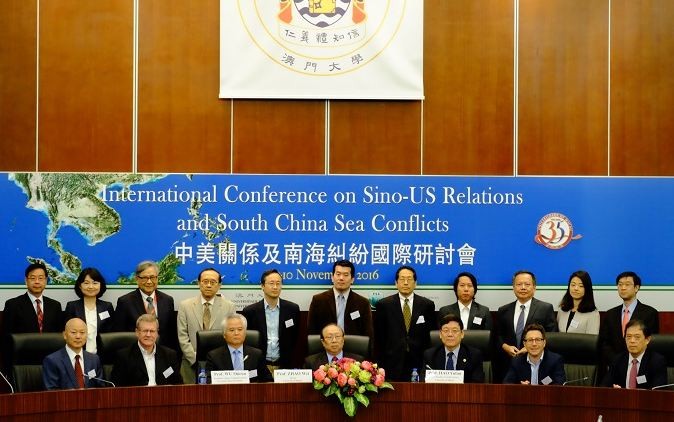A Chinese state-owned think tank focused on the South China Sea said the United States continues to increase its military presence in this disputed sea with incessant air, sea and submarine patrols whose numbers will exceed 1,000 this year and might probably reach 2,000.
The National Institute for South China Sea Studies (NISCSS) located in Haikou City on the island province of Hainan, reported over 700 U.S. reconnaissance patrols of the South China Sea in 2015, a far more "quieter" year than 2016 when tensions between the U.S. and China rose to its most dangerous levels so far.
NISCSS specializes in research on issues of the South China Sea. It claims to have formed a systematic scope of research into the South China Sea, including the strategy; the geopolitics and policies employed by China and neighboring countries with claims to this sea.
China is now the "No. 1 targeted country" of close reconnaissance by the U.S., said NISCSS in its "Report on the Military of the United States of America in the Asia-Pacific Region."
Included in these patrols are U.S. Navy Freedom of Navigation Operations (FONOPs) where its warships sail as close to China's string of man-made militarized islands in the South China Sea to assert these waters are international waters. Navy air reconnaissance has also increased in frequency.
The Permanent Court of Arbitration in The Hague last July 12 ruled in favor or the Philippines by ruling as illegal China's claim to own most of the South China Sea. The ruling also affirmed the sea as international waters.
The report said the U.S. launched more than 1,200 close reconnaissance sorties against China in 2014 compared to over 260 in 2009. There was an "obvious increase" in the number of US close reconnaissance activities in the South China Sea in 2015, said the report.
The U.S. has also raised the "frequency, scale and complexity" of joint military exercises and aerial military exercises in the Asia-Pacific region. In 2014, US Pacific Command initiated 160 bilateral and multilateral military exercises, but the number of drills rose to 175 in 2015, according to the report.
"In recent years, the contents of exercises expand to such subjects as ground warfare, aerial warfare, maritime warfare, anti-missile warfare, special operations, electronic and cyber warfare."
"Such (U.S.) activities have not only threatened China's national security, damaged China's relevant maritime rights and interests and undermined Sino-US strategic mutual trust, but is also very likely to lead to accidental collisions at sea or in the air, making it an important negative factor affecting Sino-US relations and also peace and stability in the region," said the NISCSS report.
"China could possibly set up an Air Defense Identification Zone in the South China Sea if the US continues to intensify patrols and low-altitude spying in the region," said NISCSS president Dr. Wu Shicun.
Dr. Wu is also president of the Institute for China-American Studies (ICAS), the only Chinese think tank with an office in Washington D.C.
"It's very possible for President-elect Donald Trump to deploy more vessels in the South China Sea," he added.



























